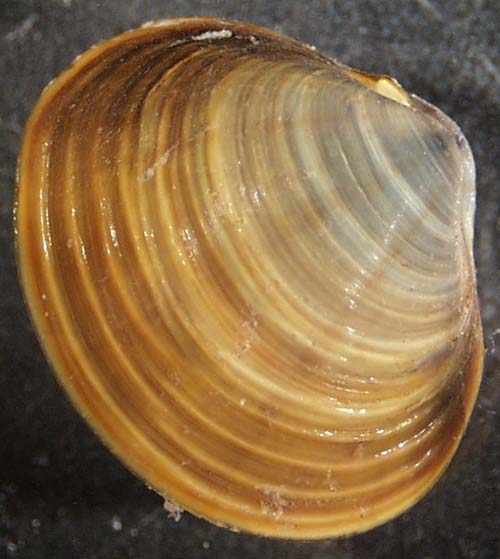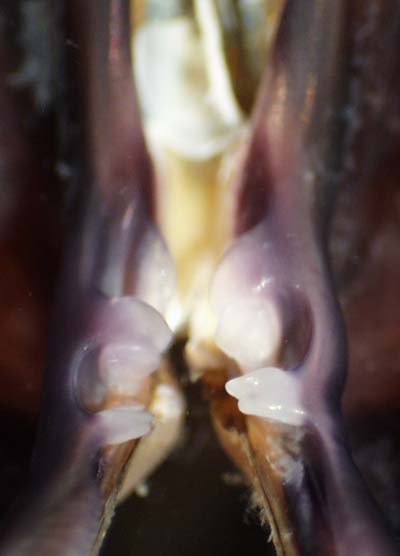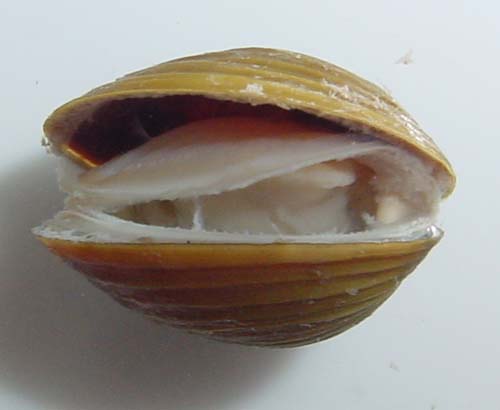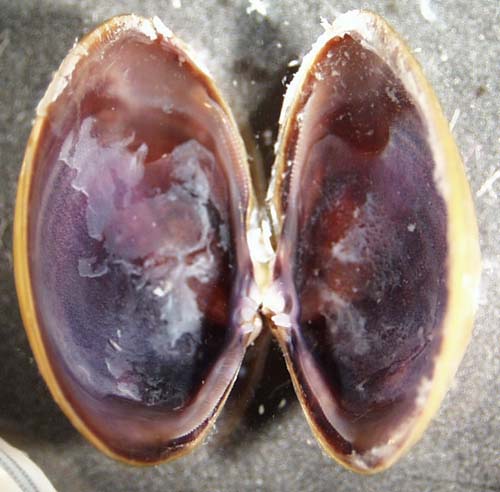
THE XERCES SOCIETY FOR INVERTEBRATE CONSERVATION Aquatic Invertebrates in Pacific Northwest Freshwater Wetlands |
| Identify taxa |
Corbicula fluminea |
One or two species of Corbicula have been introduced into North America from Asia, where it's been an important food source and traditional medicine for centuries. It is now present over much of the US and can be found in almost any freshwater habitat, although it seems to be most abundant in clean streams and rivers. It needs high levels of dissolved oxygen, and wetlands have sometimes prevented its further spread. Corbicula can be found on most substrates, but prefers sands and clay. These clams are very effective at reproducing and can reach population densities into the thousands per square meter. Corbicula's appearance can vary widely, but the nearly circular shape; large, thick shells; and raised growth rings should provide the characters needed to identify them in the Northwest. Their color is typically tan to brown. |
Size: large to xlarge
|
 |
|
© 2007 Xerces Society
Contact info@xerces.org






